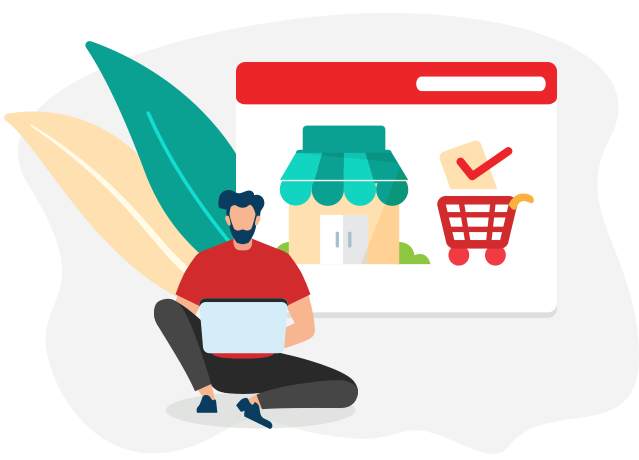How many times have you asked for a Band-Aid, as opposed to a bandage?
Or a Sharpie, instead of a marker?
When an object is tied into a specific company’s name, that’s the ultimate proof of the effectiveness of brand awareness campaigns.
Brand awareness keeps you top of mind when customers are looking to buy products like yours. And if done exceptionally well, your product and brand will become your customers’ go-to choice.
If you’re starting a new business, redesigning your company aesthetic, or just struggling to gain traction for an existing brand, do what the most successful companies do: Develop standout brand-awareness campaigns.
This guide will help you learn how to boost your brand awareness, increase the impact your marketing efforts, and grow revenue.
To put brand awareness best practices into action, you’ll want to fully understand why it’s important to refine how you’re positioned to your target audience.
In this guide we’ll cover:
Table of contents
- What’s the difference between brand awareness and marketing?
- How to Increase Brand Awareness
- 1. How to Increase Brand Awareness Through Content Marketing
- 2. How to Increase Brand Awareness on Social Media
- 3. Paid Media Brand Awareness Campaigns
- 4. Improving SEO For Better Brand Awareness
- 5. Event Sponsorships For Visibility
- How to Measure Brand Awareness
- Five Successful Brand Awareness Campaigns
Let’s dive in.

Brand awareness is essential to your eCommerce success.
Brand Awareness = Attention (and Sales) for Your Brand
Like Apple, Nike, and Warby Parker, successful brands carve out unique brand identities, creating distinct perceptions in their customers’ minds — earning sales, building relationships, and, in some cases, creating diehard customer loyalty.
So how can you create or expand your brand awareness like the biggest brands do?
In this article, we’ll explain what successful companies do to establish their identity, and how you can do the same.
What’s the difference between brand awareness and marketing?
Though the two are often confused, brand awareness is very different from marketing in many ways.
How so?
Let’s look at two key differences between brand awareness and marketing:
Brand awareness is a piece of the marketing strategy pie.
Brand awareness contributes to the overall marketing strategy. Where marketing is the whole pie, branding is an important slice.
Direct Marketing vs. Indirect Marketing
Building brand awareness is a form of indirect marketing. With indirect marketing, the goal is to tell your target audience about your brand, not sell them your products. On the other hand, marketing is a form of direct marketing where the goal is to sell.
How to Increase Brand Awareness
Big brands drive, increase, and expand awareness by being clear, consistent, and unique in their promotional campaigns.
With that said, here are five ways to increase brand awareness:
- Content Marketing
- Social Media
- Paid Media (PPC, Facebook Ads, Instagram Ads, etc.)
- Search Engine Optimization (SEO)
- Event Sponsorships
1. How to Increase Brand Awareness Through Content Marketing
Standout storytelling and value-packed content marketing are sure to stand out. Here’s how to shape your content.
Get Emotional
Successful brands connect with customers on an emotional level. And according to Harvard Business Review (HBR), “on a lifetime value basis, emotionally connected customers are more than twice as valuable as highly satisfied customers.”
Tell a Story
Entrepreneur Magazine states that the most successful storytellers achieve the most brand awareness. Learn to tell and sell a compelling brand story for maximum impact.
Become an Authority
Customers trust authoritative brands. Build trust and authority through your content marketing program. Create honest, open, and transparent discussions with your audience about your brand and through your content.
Make an Impact
Put storytelling and trust-building at the center of your strategy to grab attention and create deeper connections with your target audience. Storytelling communicates shared values, creates emotional connections, and drives engagement.
Be Consistent
According to Forbes, “Content consistency” is king and helps build “a better customer experience, but it also helps build credibility, reputation and brand trust.”
Be Bold. Unique. Different.
Standout brands stand out. Celebrate what makes your brand interesting, different, edgy, or bold. Your differentiator could be your secret sauce.
2. How to Increase Brand Awareness on Social Media
You don’t need to be on all social media channels — nor should you want to. You only need a presence on the channels that matter to your target audience. That way, you can focus time, money, and resources on the channels that resonate most with that audience and yields the most ROI.
Focus your energy on what matters to your target audience:
- Favorite social media platforms.
For instance, studies show that stay-at-home parents, who have a lot of buying power, tend to prefer Pinterest, Instagram, and TikTok.
- Where they spend money and why
Is it Etsy to support hand-crafted products? Are they shopping bulk to save money? Are they looking to save time by using subscription services? - What information are they looking for about products and companies like yours
Are they looking for green products and specific information from environmentally friendly brands?
Knowing which social media platforms your target audience prefers and what they are looking for can help you deliver what your audience needs, while achieving your brand awareness goals at the same time.
3. Paid Media Brand Awareness Campaigns
Advertising through pay-per-click(PPC) or social media boosting campaigns can quickly give you visibility without being overbearing to consumers.
Whether you start small with Google Search and Display Ads to show up higher on Google or YouTube. Or, you can strategize a more robust campaign that includes streamlined targeted social media ads, paid influencers, banner ads, and more.
If you’d like assistance with getting started on a paid media campaign, reach out and one of our Growth Services experts will gladly answer any questions you have.
4. Improving SEO For Better Brand Awareness
There’s no doubt that SEO has become more competitive than ever. And while PPC is one solution, you should still focus on bringing as much organic traffic as possible — let your business be easily found.
View our article here for 10 easy ways to boost your SEO today, or contact us to get started on an SEO plan.
5. Event Sponsorships For Visibility
By sponsoring an event, you’ll have the opportunity to get your business in front of your targeted audience — or even in their literal pockets with branded take-home items. (People love free stuff!)
Event sponsorships also provide you with the opportunity to reach specific industries, niche demographics, or widespread audiences that you might not otherwise cater to directly.

How to Measure Brand Awareness
Because brand awareness is specific to your company, there’s no hard-fast rule on measurement; instead, measure what matters to your brand.
As you develop a measurement plan, keep the following in mind:
1. Clarify what brand awareness is for your company
Since brand awareness can mean different things to different stakeholders within the same company, create one unified definition and a corresponding goal.
2. Develop brand awareness goals with concrete deadlines
For instance, “Increase our Instagram engagement by 8% by December 31.”
3. Define KPIs based on your brand awareness definition and company goals.
Here are a few metrics to consider:
Direct Traffic: Especially net-new traffic since the campaign launch.
Branded Search Volume: Brand plus keywords.
Social Engagement: Likes, comments, shares, video views, etc.
Brand Mentions: Blogs, websites, and so on.
4. Regularly assess and report on brand awareness performance
To achieve your goals, you’ll need to regularly track, analyze, and report on your brand awareness KPIs and adjust as needed. An analytics strategy can keep your reporting streamlined.
Five Successful Brand Awareness Campaigns
Now that you know what big brands do to win brand awareness, here are five successful campaigns for inspiration:
1. Tom’s Shoes: Radical Storytelling + Purpose-Driven Marketing
Blake Mycoskie, founder and CEO of Tom’s Shoes, used a unique story and social giving — buy one pair, give one pair — to generate viral brand awareness. The goal was to win celebrity endorsements and gain both social and mainstream media attention.
The result? Tom’s Shoes has become a beloved brand by conscious shoppers, and has donated 100+ million pairs of shoes to children in need. In 2019, they brought in $300 million.
2. Peloton: Social-Engagement as an Experience and Product Differentiator
Peloton, the most successful business to launch from a Kickstarter campaign, used shared social experiences as a core product feature to help Peloton gain a cult following.
The Result? With the help of its diehard fans and pandemic-induced, in-home workout interest, Peloton went from $714 million in sales in 2019 to $4.02 billion in 2021.
3. MetroTrains Australia: Killing It with Humor and its “Dumb Ways to Die” Campaign.
MTA Australia used humor to engage its target audience about a serious topic: death by train.
The Result? The PSA achieved its intended goal and became part of pop culture with its “Dumb Ways to Die” mobile games, merchandise, and social media parodies.
4. SAP: Building Authority and Trust with Storytelling and Content Marketing
SAP, an enterprise software vendor, used brand storytelling and content marketing on its blog and via Forbes.com to develop its authority. As a result, SAP attracts attention, establishes relationships, and builds trust and value with its prospects — all before the buyer’s journey.
The Result? Using its authority and content marketing as a customer acquisition strategy, SAP went from a relatively unknown software company to earning $33 million in 2021 — more than doubling its 2009 earnings of $14 million.
5. Warby Parker: Disrupt Business As Usual + Clever Storytelling
Warby Parker, an eCommerce eyewear company, provides stylish glasses at an affordable price with at-home try-ons — a disruptive offering in the eyewear industry. The eyewear brand used social media to generate massive brand awareness and promote its social-good initiatives.
The Result? With its Buy a Pair, Give a Pair program, Warby Parker has donated more than 10 million glasses to people in need. Still, in 2021 they earned $540 million, up 37% and $147 million from 2020.
Increasing and measuring brand awareness can be difficult in an increasingly competitive eCommerce marketplace.
Ready to create your roadmap to brand success?
Contact us today for a free consultation.
Gentian, CSO and co-founder of Shero Commerce, guides the company and client digital strategies. He's an expert in technical SEO, Inbound Marketing, and eCommerce strategy.






